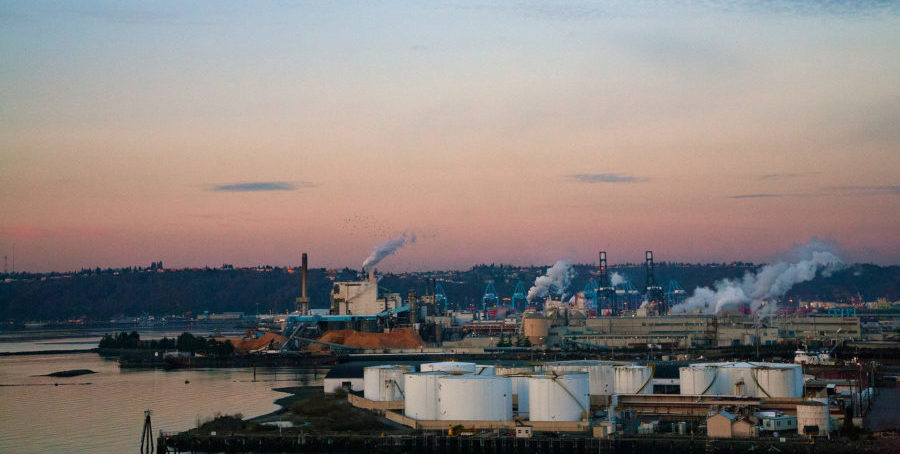Sightline is publishing a new report, “Northwest Targets,” that provides a risk assessment for the region. The report analyzes every community in Oregon and Washington targeted by large-scale fossil fuel proposals since 2010. It reviews the history of local struggles with fossil fuel development proposals and gauges the risks of future proposals.
“Northwest Targets” identifies three places that are prime targets for future dirty energy expansion:
- Lower Columbia River: A cluster of ports on the Columbia—Longview and Kalama in Washington and Port Westward in Oregon—have faced nearly a dozen fossil fuel proposals.
- Tacoma, Washington: The heavily industrialized Puget Sound city is wrestling with several active fossil fuel proposals and is almost certain to be the site of future plans.
- Cherry Point, Washington: Of great cultural importance to the Lummi Nation, this area is already a major center of fossil fuel activity and is at substantial risk of further development.
Northwest communities are not powerless, however. Each has at its disposal a secret weapon: fortifying local land use laws to protect themselves from coal, oil, and gas projects. By limiting the ability of dirty energy companies to build new projects, these places are protecting their residents and their local economies, even as they chart a course for other communities that face similar risks.
The risk of new fossil fuel developments in Northwest communities is hard to predict. Yet it is possible to provide a rough rank-ordering of the most threatened places based on the quantity, scale, and track record of dirty energy proposals; the existence of connected fossil fuel infrastructure; and the presence of protective land use laws.
In “Northwest Targets,” Sightline assesses the current threat to each community in Oregon and Washington that has been targeted by at least one large-scale fossil fuel proposal since 2010. Ranked from least to most threatened, these communities are the Northwest’s target communities.


Comments are closed.